As beekeepers, we do have a double standard. We are awed by the industriousness of our insects…
On instinct alone, they make immaculate builds, travel miles and find their way back, give directions by way of interpretative dance, and, of course, their efficient division of labor, which ensures the longevity of the colony.
Of course, bees do so many other things that keep us beeks entranced by their presence. However, we abhor the same spirit in other six-legged creatures, in this case, ants.
Ants are opportunists and will, therefore, take advantage of a weakened colony in a beehive.
In that way, they are similar to wax moths. When you discover ants in a beehive, it’s usually a symptom of a bigger problem and could put your hives in serious danger.
In fact, when particular species of ants form colonies and happen to cross paths with honey bees, they can fight to the death and significantly harm and even kill a beehive.
Ants come in various colors and sizes and, in most cases, would only be a minor irritation for a beekeeper. Generally, a strong colony is usually able to defend the beehive from ants.
Unfortunately, there are times when ants can become more than a slight inconvenience, so your little ladies may need your help with this one.
Here’s what you can do to help your bees when you find ants in or around a hive.
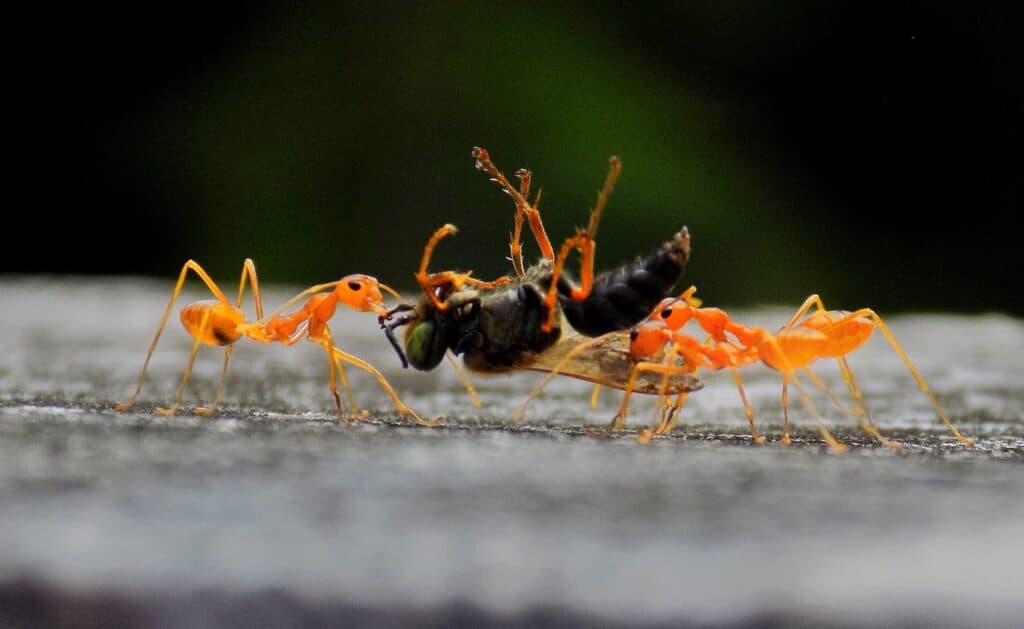
|
4.5
|
4.6
|
4.1
|
4.8
|
|
$80.73 ($80.73 / Count)
|
$13.29
|
$20.99
|
$15.47 ($0.86 / Ounce)
|
Do Ants Harm Beehives?
Ants are the annoying neighbors that get a little too familiar. You let them borrow a screwdriver one day. The next day, they moved into your house, wiped out the pantry, and seemed a little peeved that you ran out of beer before they arrived.
Most of the local ant species are like that. They come in when the hive’s defenses are down. They love the honey and will also take the bee larvae as a rich source of protein.
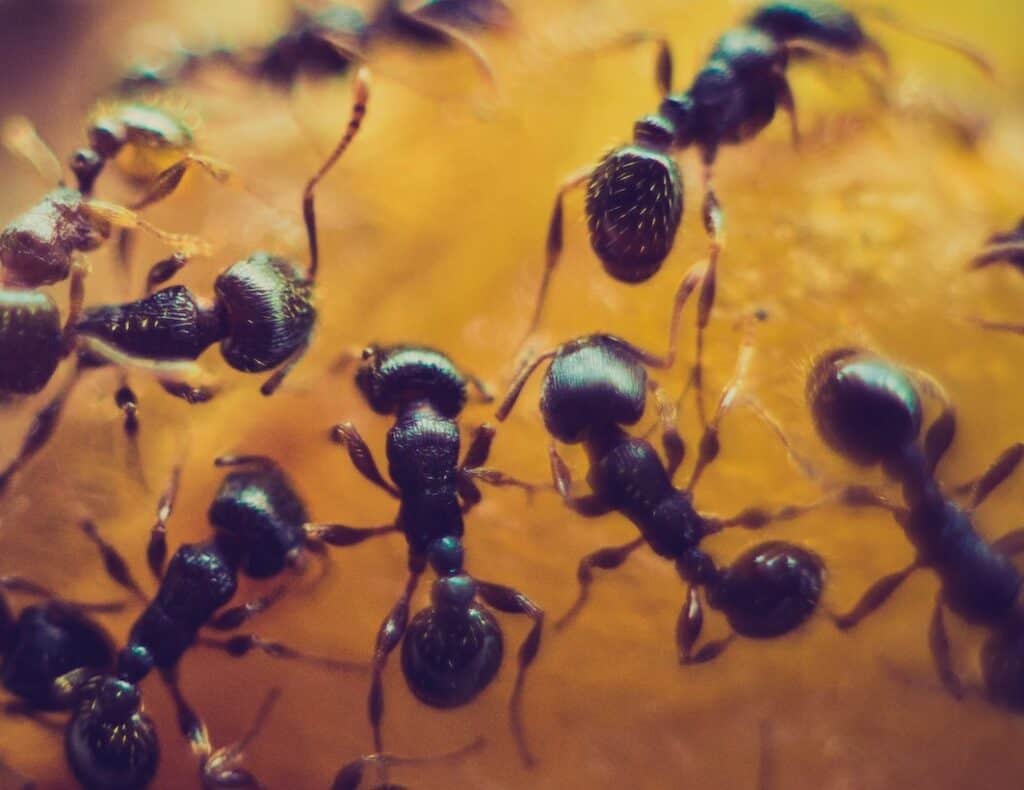
This is very difficult for them to do if the colony is vibrant. Should you open the hive and find it overrun by ants, that usually means that the bees weren’t doing very well anyway.
Now, Argentine ants can use their numbers aggressively. It is believed that they do carry some viruses, such as the Deformed Wing Virus (DWV), which has debilitating effects on a developing bee.
So, do ants harm beehives? Yes, they do. The hive itself may remain intact, but the colony is going to be terribly affected. A raid on their honey affects their ability to make it through the winter. If the colony was struggling, to begin with, they often cut their losses and absconded.
What to do About Ants in Your Beehive
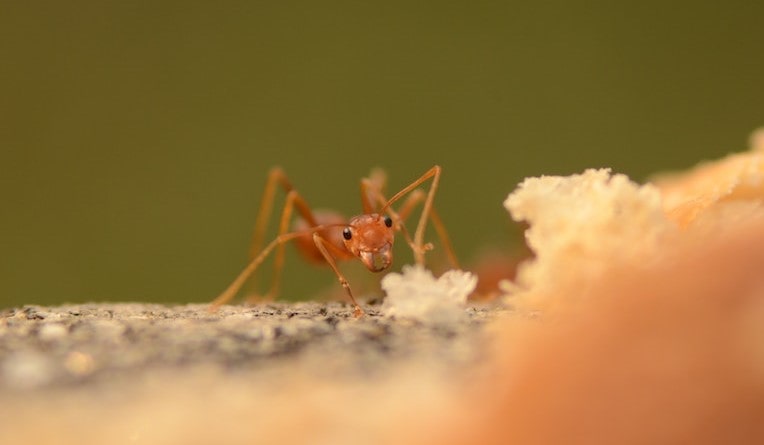
Many beekeepers have found that ants like to build their nests between the inner cover and the telescoping cover. It’s warm, dark, and relatively close to a food source of either sugar syrup or honey.
If you find that they have already gotten cozy in that space, the easiest thing to do is to scrape them away and find their trail. Once you know their access point, cut them off. We shall see the various ways you can do that in just a bit.
The problem with dealing with ants in the hive is that biologically, they are very similar to bees. Poisoning them would poison the bees.
If the bees are still in the hive, your only option is mechanical. That can be tricky because ants are much smaller in size. It’s more effective to prevent their entry in the first place.
The good news is that ants are heavily dependent on their pheromone trail. If you interrupt this trail, then they get disoriented and can’t figure out where to go.
You may have come across a video that shows a lot of ants just moving around in a circle. It is believed that they are army ants, completely blind and wholly dependent on the pheromones left by the ant in front of them.
Somehow, the trail made some sort of loop, and all the ants continued to follow that loop, leading to this spiral movement. This spiral continues until the ants die.
This is good news for you. Once you’ve scraped away the ants that you’ve found in the hive, just interrupt the pheromone trail. Use one of the odor deterrents we shall discuss, and this can prevent more ants from entering the hive.
Can You Get Rid Of Ants In A Beehive Without Killing Bees?
Killing ants without getting dead bees will depend on the method you use. For instance, you can drown ants without affecting the bees.
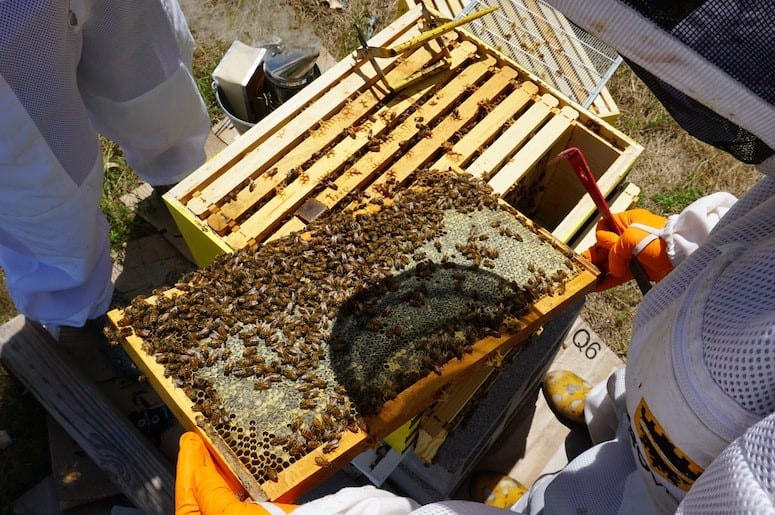
However, chemical warfare would be counterproductive. Ants belong to the same scientific order as Hymenoptera, just like bees. So, what would chemically annihilate a whole ant colony will probably have a similar effect on the bees.
On a non-scientific note, Argentine ants have behavior that seems very similar to swarming.
Sometimes, one queen ant will walk away from the nest accompanied by a few workers and set up shop elsewhere. Most other species have a queen going off on her own, beginning her empire from scratch. Just a fun fact I thought I should share.
When planning what deterrents to use on ants in your hive, you need to consider the least amount of damage to your bees.
New and improved moats have a sort of cover to prevent curious bees from drowning, yet the gap between the lid and the moat is too large for ants to get across.
How to Get Rid of Ants In A Beehive
Beekeepers are like old wives; we have so many tales, but many of them do hold water. Here are some of the ideas and ways you can use that will help deter and keep ants out of your beehive.
1. Build moats around the legs of your hive stands
This seems to be a beekeeper favorite. It has worked wonderfully and is very easy to implement.
All that is required is for you to get four wide containers that allow for your hive stand legs to fit while leaving enough room between the leg and the edge of the container.
The ants can’t get to the stand without swimming through the moat. If you don’t have
In case you’re wondering, they don’t swim, but they can float. That brings us to the second section, what to place in the moat.
What to place in the moat
Water, though a good idea, can act as a bridge because the ants can use the surface tension to get around. It’s safer to use some soapy water.
Some people use vegetable oil, and others use motor oil. Used motor oil is much cheaper, but vegetable oil is more environmentally friendly should it rain and the container overflow.
You have a choice between the low-budget DIY option like the image below or purchasing a stand that already has the moats fitted.
Regardless of how you choose to add the moats, the diagram below will give you a better understanding of how to ant-proof your beehive using moats.
The advantage of the latter is that the designs available comprise two dishes, one at the bottom to hold the liquid you choose and another at the top, which prevents bees from entering the moat and drowning.
The DIY option is quite easy to set up as well, though you may lose a few bees to curiosity. However, there are no alarming numbers, I assure you.
2. Use dirty motor oil/grease to paint a strip on the leg of your hive stand
Instead of using a moat to keep bees away from your hives, you could paint the supporting beam/leg of the hive stand with inexpensive motor oil

That is usually enough to deter the ants. However, since your hive stand is outside at the mercy of the elements, your stand will need a touch-up of your beehive legs every few months.
3. Spice Up the Area Around the Beehive With Cinnamon
We are not sure why this works, but it seems to deter ants from the hive without affecting the bees at all.
Outside of some hearty sneezing, being around cinnamon is relatively safe for you as well and is very easy to purchase and apply.
However, you need to use
Cinnamon sticks don’t seem particularly effective, probably because the ants can easily get around them.
Ground cinnamon is easier to spread and much harder for the ants to work around.
Once again, you’ll find that this method works best in conjunction with some of the others, such as clearing nearby brush and keeping the hive spill-free.
4. Remove all-natural bridges to the hive
Ant invasions can happen through tall weeds and wild grasses. Allowing these plants to grow near your hive would be like providing an ant highway for ants and other crawling insects. Ants can use them as ladders to get to your hive, even when you raise it off the ground.
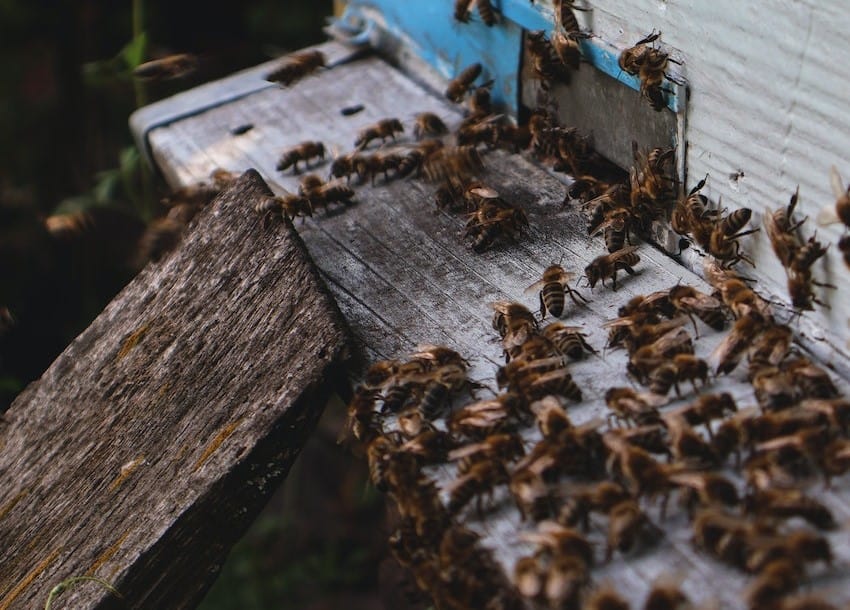
This works best in conjunction with other methods, such as using the moats. You could choose to cover the area immediately under and around the hive with gravel to prevent undergrowth.
5. Slather on some tanglefoot
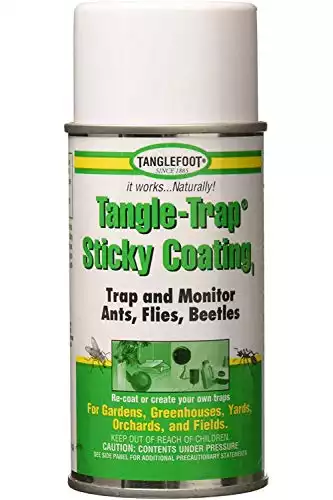
- Effective and pesticide free
- Works naturally
- Trap and monitor ants, flies, and beetles
It can be very messy, so you have to be careful when you use it. It is a natural product often used to protect fruit trees from crawling pests such as ants and some moths.
With trees, the application is a little tricky because one has to be mindful of the bark, which you still want to protect.
With hive stands, you can just spread some of this sticky substance directly on the surface of the hive legs. It’s advisable to have the strips closer to the ground to reduce the probability they catch bees instead of ants.
You’ll need to reapply after a month or two because Tanglefoot can get washed away or be covered in debris.
6. Beware of spillage and fallen combs
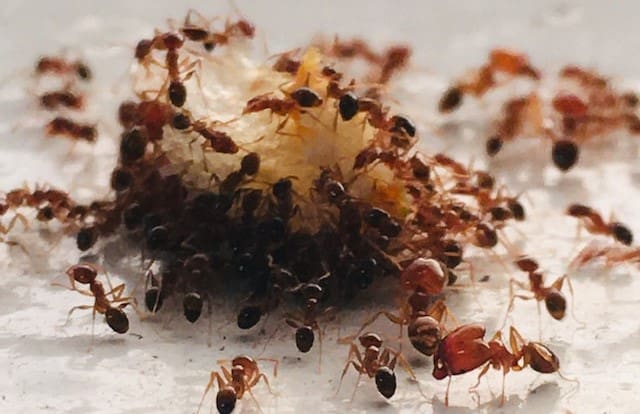
Sugar syrup and loose combs attract ants to your honey bee colony. In fact, spillages are notoriously known to encourage robbing behavior.
When visiting the hive to do an inspection, always have a bucket with you. If you’re going to provide your bees with some syrup, you need to ensure you keep your spillages to a minimum.
What you do spill, you need to clean up. Otherwise, invading ants would have a party among your bee hives.
If you have made a feeder out of a jar, you want to turn it upside down in the bucket so that the initial dripping is contained before placing it in the hive.
Any burr comb in the hive should be cut out and placed in the bucket as well. Don’t provide any additional motivation for an ant infestation.
7. Make the hive stand as slippery as possible
Ants are slaves to friction, just like we are. If there’s no friction, they can’t move.
Some people spread Vaseline on the hive stand, while others use grease.
Others can wrap it with cling film and spray the surface with a lubricant.
There are even commercial products that are geared toward creating a slippery surface that keeps ants away.
Be creative in coming up with your own ant-proof hive stand, preventing an ant invasion, and protecting your bee yard.
8. Keep Some Ant-Repelling Plants Around The Hive
Another natural way of keeping ant colonies from thriving near your hives is by growing ant-repelling plants.
Ants raid beehives anytime they want to. Keeping up with them may be a tiresome task for every beekeeper.
But with ant-deterrent plants around, ant control may not be as tiresome as one would think. Ants hate plants with strong scents like Peppermint, Lavender, Rosemary, and Citronella planted near your hive boxes.
Consider adding some of these plants to your garden and enjoy the benefits of a natural and eco-friendly ant repellent.
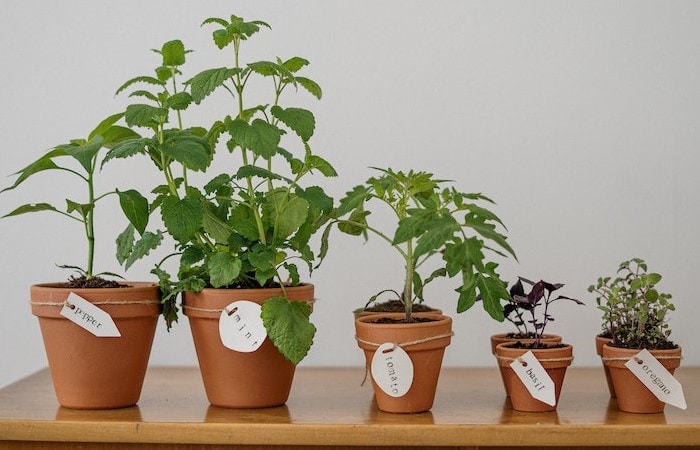
How do Bees Keep Ants Out of Their Honey?
As with most problems, the trick is in early detection.
When a strong colony is faced with a forming ant trail, they are capable of throwing the sneaky intruders out because they are considerably smaller than the bees.
It has also been observed that the guard bees keep moving across the forming ant trail. It is thought that this interrupts the pheromone trail, which disorients and stops ants from proceeding.
A strong colony can then dedicate a sizeable amount of worker bees to engaging and discarding the ants.
The only exception is the Argentine ants, whose size and number really work to the detriment of the bee colony.

Final Thoughts
Don’t let ants near your beehive get you down. Protect bees by dealing with threats. It can be quite easy, especially if you are proactive.
May you be victorious, battling against ants in your beehive. We hope that our simple guide here will help you get rid of ants in your beehive. With these simple solutions, you will have no more ants in your bee yard in no time.
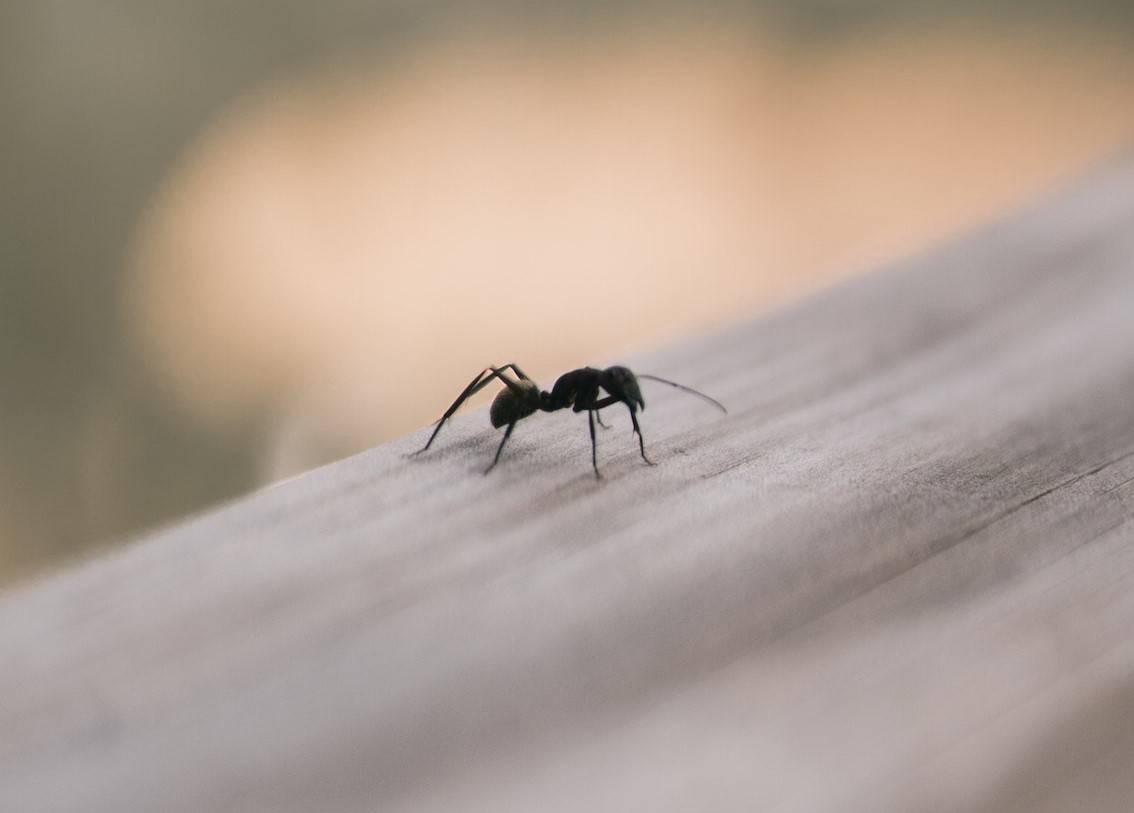
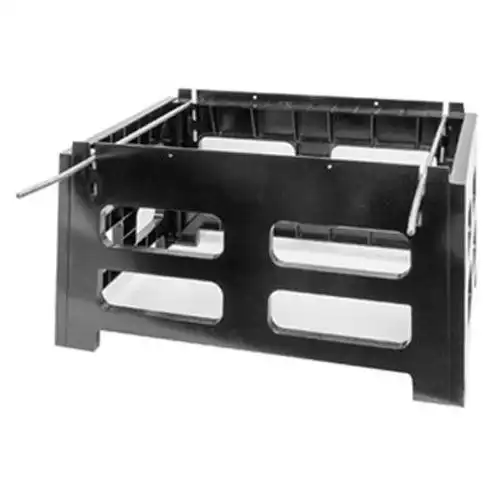
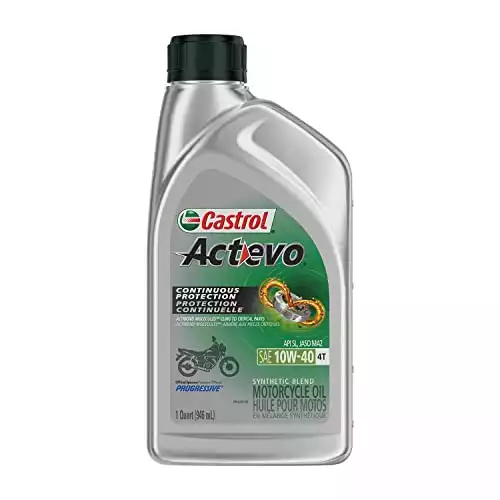


Very helpful thank you, Dan
I have the ant problem. Will try some of you remedies.
Thank you,
Bob
Good reinforcement and other ideas, thankyou.
I’ve put some thick gel around the lower legs and diatomaceous earth around the feet of hive. As soon as I can organise some assistance I will put the ant guards I have recently purchased.
How do the Commercial beekeepers control ants
They don’t have a problem with ants too much. They have so many hives and their hives are so strong they kill the ants. If they do take over a hive no loss if you have hundreds of hives.
thank you for the ideas you saved my bees
Spreading diatomaceous earth on the ground about 3’ around and under the hives stops Argentine ants. Even after rain.
It seems to be effective and inexpensive.
Crisco shortening, powdered sugar and boric acid. Make a paste and put it in an old CD case and snap the case closed. Works for us. Or you can buy the small black cases from a bee supply store. Use it like you would as the CD case. I also sprinkle cinnamon around my hives. You can draw a line with cinnamon they won’t cross the cinnamon….